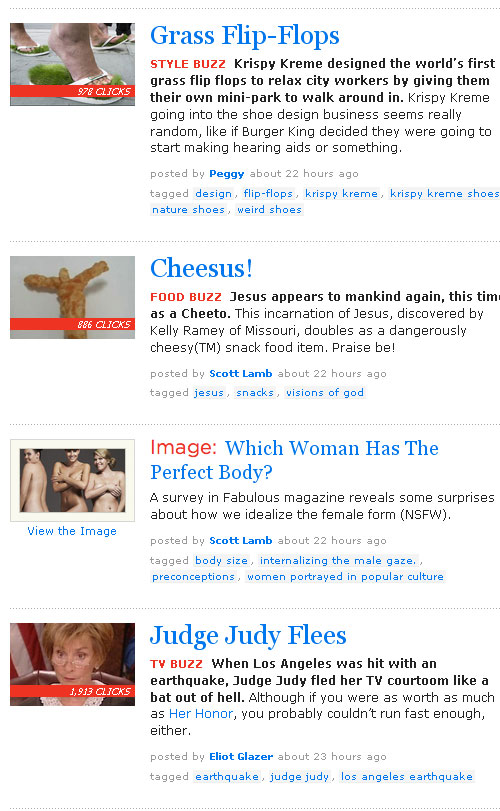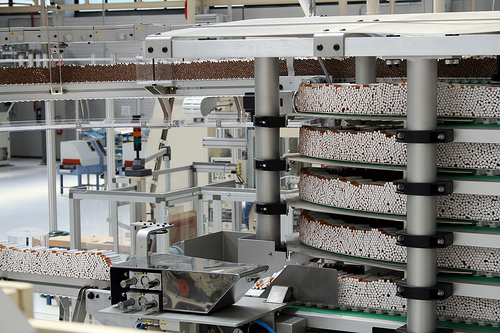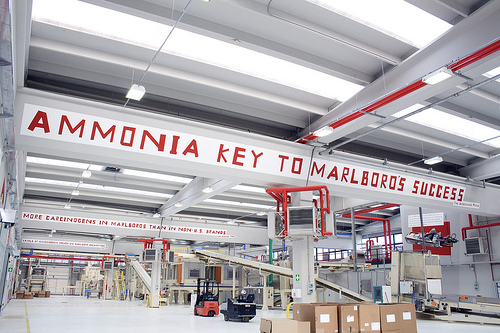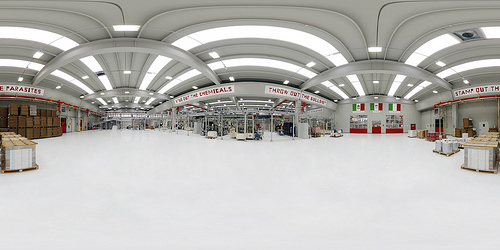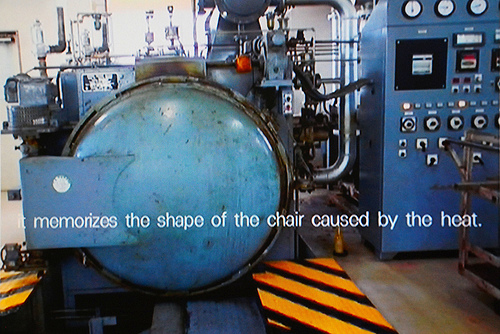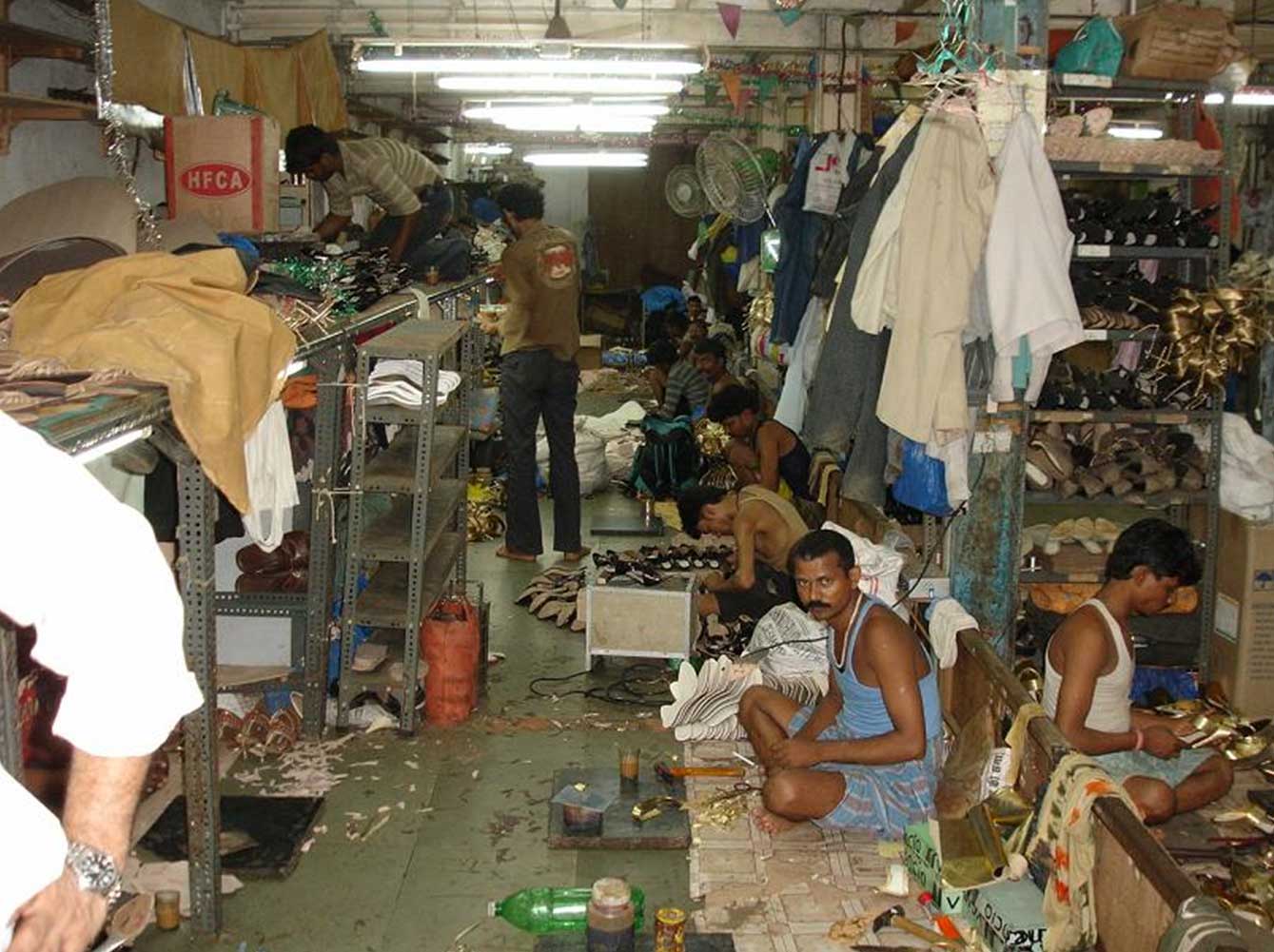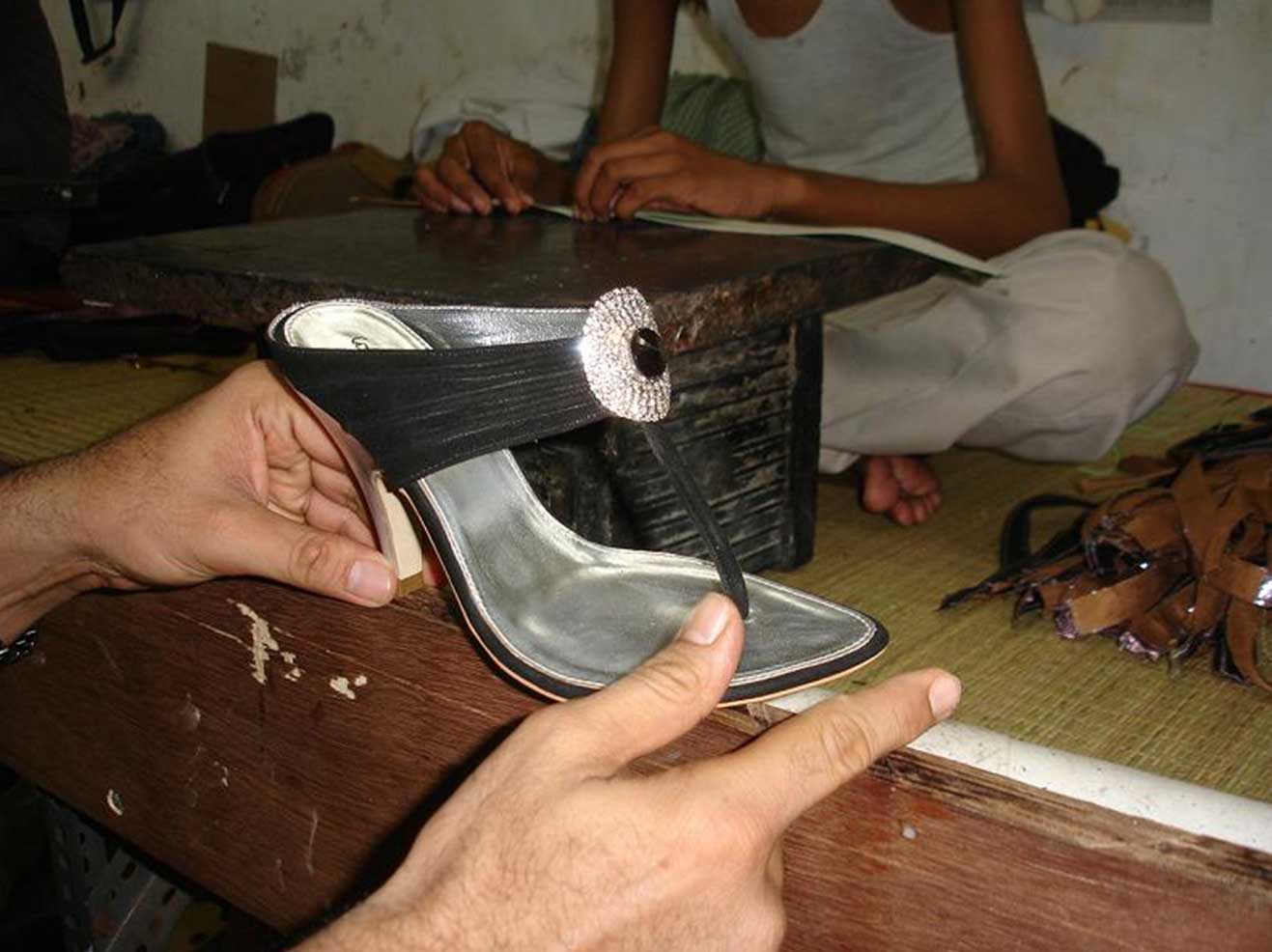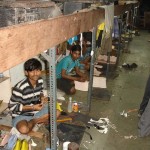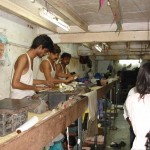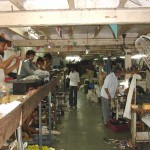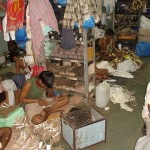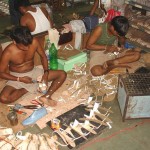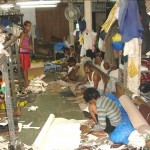via meatpaper
phone guide
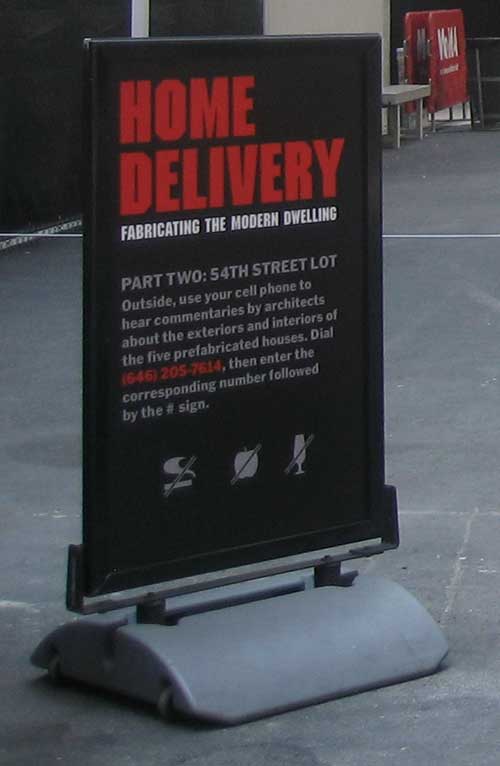
I’m not generally a fan of Home Delivery exhibit shown in their 54th Street lot. That’s where I noticed this sign, which provides a number to call with your cell phone when you want to hear audio commentary. Which, of course, begs the question> why not always use your cell phone?
generating buzz
I recently saw a presentation by Jonah Peretti on his career as an “viral marketing hotdog” (to quote the New York Times). Apparently I’ve had my head buried in sand for the past few years, because he’s made a name for himself as someone who knows how to get notorious and I had never heard of him: he first became known for trying to get NIKEiD to make him custom shoes emblazoned with the word ‘sweatshop’ (the notorious Nike sweatshop email), then partnered with his stand-up comedian sister to make BlackPeopleLoveUs.com, a spoof website by a couple who is proud of not being racist, and the ultra-famous New York City Rejection Line which generates automated dumping messages for unlucky men given a decoy phone number.
After this string of internet successes, he co-founded the Huffington Post and Buzzfeed, a site that tracks things that are hot on-line. He has become an expert on viral marketing and what he calls the ‘bored at work network,’ the millions of people who are searching for something to like on the web. He provides consulting advice to mass media outlets who would love to capture these waves of free publicity but somehow can’t.
The point of his talk was quite mild-mannered for a professional provocateur: he qualified viral marketing in terms of the rate of growth of an internet meme or a piece of web content. Exponential growth, in which each person who finds a meme recommends it to more than one other person, is highly desirable but almost impossible to predict (except by Jonah). On the other hand, sub-viral growth – in which each reader sends a link to less than one other person – is still valuable because it can nevertheless double the initial audience. His most salient example was the Super Bowl advertisements, which have only recently been duplicated on YouTube. The traditional media outlet guaranteed a primary audience, and the fact that the videos also existed on-line made it possible for a secondary audience to watch the ads, one that could be as large as – and was occasionally much larger than – the original audience. This is yet another argument for content providers to open their content up on-line so that it can be seen by a wider audience.
Despite all of this buzz hype, I was left feeling a little empty, wondering what any of it was meant to achieve if the most popular internet memes are so easily forgotten. It’s great to be able to get your message across, especially when it’s meaningful, but the “bored at work network” seems to have a taste for lowest-common-denominator content (above). Jonah’s early artistic interventions are socially critical, relatively high-brow and helped by the immense press access of the MIT Medialab where he was a graduate student. The real challenge will be to promote this caliber of idea for people who aren’t so lucky to have an mit.edu domain.
being wrong
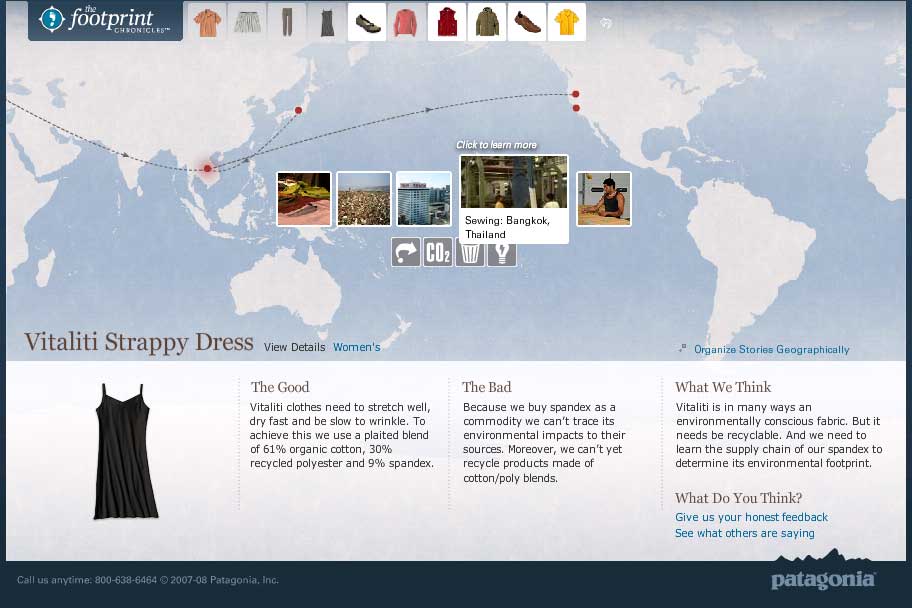
Patagonia’s Footprint Chronicles is a remarkable feat for a fashion company: a visualization of their products’ global supply chains on a map, along with videos of each step in the manufacturing process, and descriptions of each item in terms of distance traveled, CO2 emissions, waste generated and energy consumption. Not only is it impressive that a company would reveal what the environmental impact of products is, it’s really amazing that they would treat their customers like intelligent people instead of selling them meaningless greenwash. But there are problems with this approach: the footprint chronicles have a caveat:
“These examinations are partial and preliminary. Each season we’ll examine a few new products. As we learn more, the picture will gain more focus through the haze. And the more we see, and then give some thought, the more bad practices we’ll be able to change with all the speed we can muster.”
In sum, we must await their internal examinations to gain a more accurate picture of what’s going on with these inefficien global supply chains. On the other hand, each chronicle features a “The Good” section as well as “The Bad,” where they reveal that they don’t know the source of certain materials, that they can’t be recycled, and other embarrassing information. It would probably be better if experts could contribute their analyses of the impact of known processes, but it’s always good when the deciders reveal what they don’t know and can’t decide in the first place.
claymation station
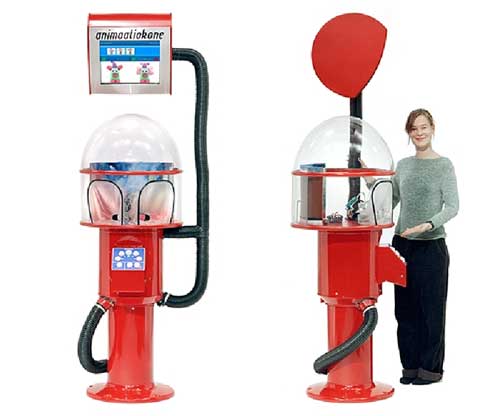
The Animaatiokone is a kiosk for making stop-motion animations out of clay: a miniature movie-making studio with a special software for instantly making tiny cartoons. It was ‘designed’ for a movie theater, so that people could learn about making movies and make one while waiting to see one. They posted the resulting movies on-line and they’ve released the stop-motion software (free trial) so that anyone can try the remarkably easy art of stop-motion animation.
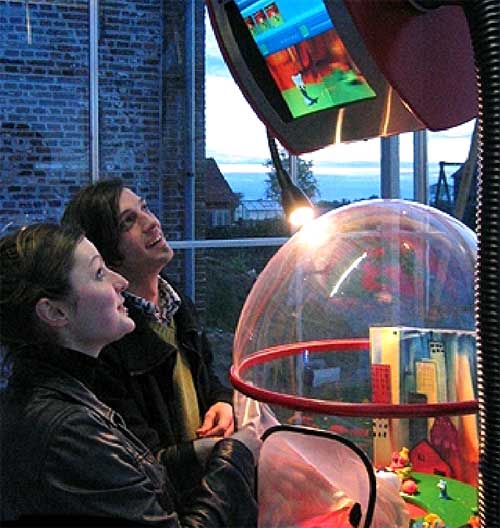
yousmoke
Transparency is a noble pursuit in this age of business2.0, and we’ve seen companies like Chumby and TCHO benefit from free press and a boosted brand identity in exchange for posting their entire process on-line for all to see. So what happens when a company that makes bad products still practices transparently? Flickr introduced me to Yesmoke, an Italian cigarette company with a rebellious spirit that was founded out of a desire to create a different kind of tobacco business. Born from of an on-line cigarette store that was ultimately sued by Philip Morris for selling to Americans tax-free (in Yesmoke’s words “This factory has been built thanks to the “unauthorized” sale of 300 million packs of Marlboros to U.S. smokers, via the Internet“) Yesmoke expresses outrage over the practices of American tobacco companies in Europe, where they owe billions of euros (!) in taxes and represent a drain on local economies. They identify their company in direct opposition to the criminally dishonest practices of these “7 bastards,” largely by documenting their practices and refusing to add synthetic chemicals to tobacco or market to youth. You can visit their plantation in Malawi, where they are experimenting on how to replace methyl bromide, a widely used soil sterilant that is harmful to the ozone layer. They have documentation of their immaculate factory which is plastered in anti-big tobacco and pro-European slogans – probably more so for the cameras than for the apparently invisible workers. And once you’ve ogled their spotless machines, you can also see equally engrossing – but far more gross – graphic images of the effects of tobacco on the body (not for the faint of heart). I guess if anyone has to sell tobacco, then it better be local producers practicing honestly and transparently. Because if you disagree, you can let them know, which is far better than the alternative.
chair bake
Tokujin Yoshioka‘s PANE chair is made of a sheet of plastic fibers rolled into a cardboard tube and baked in an oven to retain its shape. It was the fruit of a three-year design process in which he aimed to invent a completely new chair unlike any other. He named it after the Italian word for bread, but not only because of the fabrication process:
‘I believe that a “deliciously” comfortable PANE chair with an original feel has been baked by the innovative process of a new idea, material and structure.’



under the catwalk
I received this slide show purporting to document labor conditions in an Indian shoe manufacturer for a brand called Catwalk – although it’s hard for me to confirm any of this information. If you know about it, let me know, otherwise these are still pictures of people at work producing remarkably polished products in slave-like quarters.
